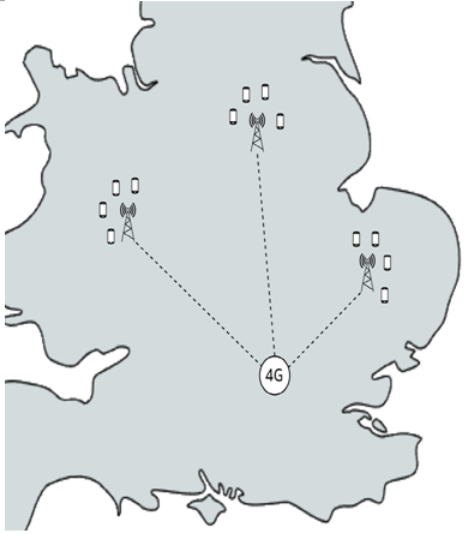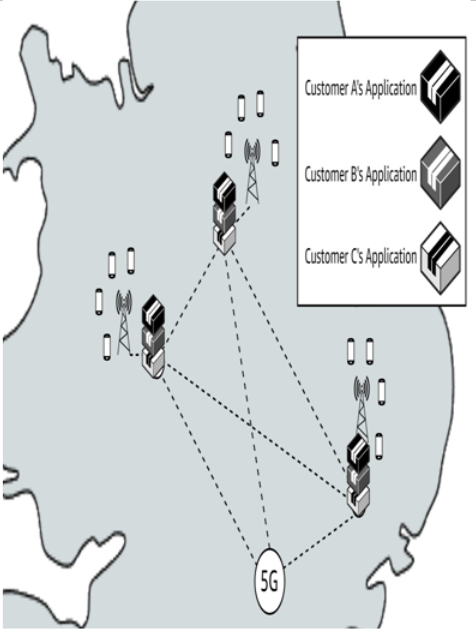Emergence of 5G – Getting Started with Edge Computing on AWS
Most MNOs have upgraded their networks from 4G/LTE to 5G within major metropolitan areas. However, more remote areas of the same networks are still serviced by 4G/LTE. The delay has been economic. The market for mobile devices has largely been captured. Customers want 5G but aren’t willing to pay extra for it. Therefore, MNOs that do roll out 5G can steal customers from ones that don’t – which ultimately means 5G rollout occurs primarily in areas of highest demand and highest competition.
This is starting to change as MNOs realize they can leverage the same upgrades they did for 5G to capture entirely new revenue streams. Historically, MNO Central Offices (COs) have been small facilities filled with purpose-built hardware for the Radio Access Network (RAN) only, with backhauls to a regional office that is an actual data center – a relic of decades-old copper-wire telco networks:

Figure 1.3 – 4G/LTE backhaul model
However, COs for an MNO moving to 5G have to be transformed into small data centers to support Network Functions Virtualization (NFV) and the distributed nature of 5G:

Figure 1.4 – 5G network distributed model
At the same time, more and more devices are coming online with demand for applications that require more bandwidth or do not tolerate the jitter and latency that inevitably occurs when traffic is backhauled and only then routed over the internet to a cloud provider.
COs become multitenant data centers
Enter MEC. In this model, MNOs use their existing physical footprint to provide compute and storage capacity for customer applications in the same way that cloud providers do – only much closer to the mobile devices consuming those applications. Average latency from mobile device to application is reduced to single digits, while 5G network slicing can ensure a level of jitter, security, and throughput that meets customer needs on a per-application basis:

Figure 1.5 – MEC example
MEC pushes significant compute resources close to the mobile devices without requiring any change to said devices. Emerging use cases such as Virtual Reality (VR), Augmented Reality (AR), smart cities, and robotics benefit from lower latency. Ever-increasing demands from video streaming apps exploit MEC for pre-staging content to reduce upstream bandwidth consumption. AI/ML systems can deliver inferences closer to real-time than if bulk observations had to be shipped back to a central location.
AWS Wavelength is an end-to-end MEC service built in partnership with MNOs around the world. It allows you to activate a special type of Availability Zone (AZ) that can host instances or containers, and participate in a Virtual Private Cloud (VPC) just like a region-based AZ. Further, services such as AWS Outposts, AWS Local Zones, and AWS EKS or ECS Anywhere can be used to build your own MEC platform.
You may also like
Archives
- August 2024
- July 2024
- June 2024
- May 2024
- April 2024
- March 2024
- February 2024
- January 2024
- December 2023
- November 2023
- October 2023
- September 2023
- August 2023
- July 2023
- May 2023
- April 2023
- February 2023
- January 2023
- November 2022
- October 2022
- September 2022
- August 2022
- July 2022
- June 2022
- May 2022
- April 2022
- December 2021
- November 2021
- October 2021
- September 2021
- June 2021
Calendar
| M | T | W | T | F | S | S |
|---|---|---|---|---|---|---|
| 1 | 2 | |||||
| 3 | 4 | 5 | 6 | 7 | 8 | 9 |
| 10 | 11 | 12 | 13 | 14 | 15 | 16 |
| 17 | 18 | 19 | 20 | 21 | 22 | 23 |
| 24 | 25 | 26 | 27 | 28 | 29 | 30 |
| 31 | ||||||
Leave a Reply